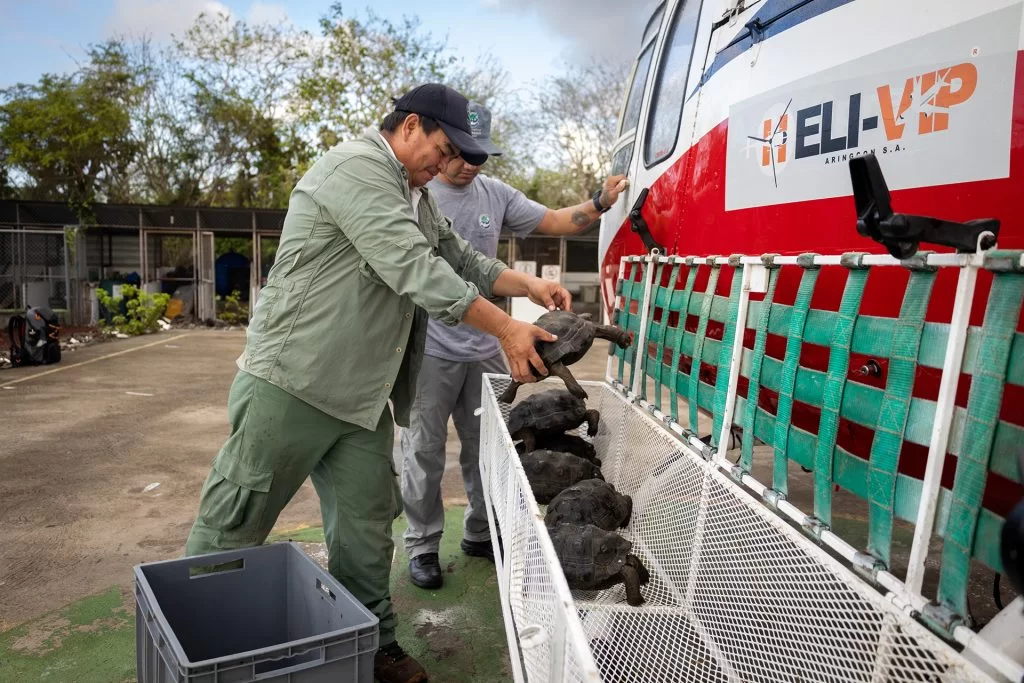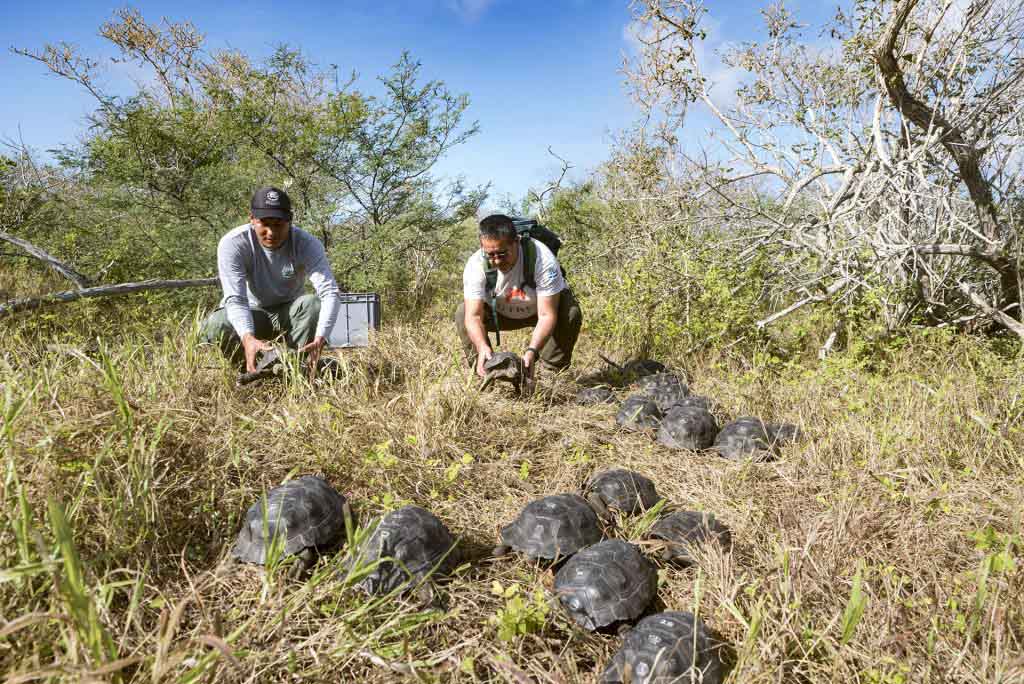The species used to be widespread on Espanola Island, but in the 1960s only 15 individuals were left, and they all lived in captivity. Captive breeding is a complex program that involves repatriating tortoises to Espanola Island from breeding centers, where they were raised and hatched. The tortoises undergo a strict quarantine before they are transported to the island. They are selected according to their age, size and health. The tortoises will be released in carefully chosen areas on Espanola that have suitable habitat conditions. The microchips are regularly checked and the health of the tortoises is ensured.
Washington Tapia is our expert on tortoises and the General Director of Conservando Galápagos. He says that the tortoise population of Espanola was — and continues to be — an important element in the restoration of the island’s ecology, since their presence helps restore ecological processes including the nesting by one of the archipelago’s endemic species, the Waved Albatross. The giant tortoises, with their enormous bodies and voracious appetites clear woody vegetation out of areas where albatrosses land and take off. These runways are essential for nesting.
Galapagos Conservancy played a vital role in supporting the restoration program. They provided funding and expertise over the past 10 years, which helped ensure its success. The world’s greatest conservation success story is about to reach a successful conclusion with the repatriation of the last captive-reared turtles to the island. 86 of them were recently released. The return of the Espanola giant tortoise to their natural habitat is proof of the conservation efforts that are being made to preserve the Galapagos biodiversity for future generations.

Park Rangers loading tortoises onto the helicopter which transported them to Española Island. ©Galápagos National Park



